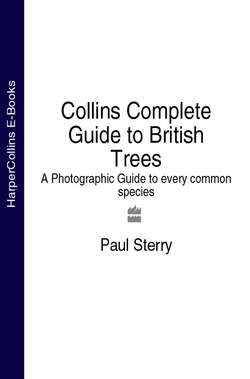Читать книгу Collins Complete Guide to British Trees: A Photographic Guide to every common species - Paul Sterry - Страница 21
THE ECOLOGY OF TREES AND WOODLAND
ОглавлениеAlthough there are many tracts of forest in the British Isles that harbour native species and ancient trees, it is important to realise that almost no woodland in Britain and Ireland can be described as truly virgin and untouched. For millennia man has interfered with the forested landscape, cutting down trees for fuel and building materials, and in order to create agricultural land. Some types of woodland are more modified than others and a few exist entirely as a result of human actions. However, when it comes to woodland comprising native species, the history of use does not necessarily detract from its ecological importance and value to wildlife; on the contrary, it often enhances it. Of greater significance than the age of the trees in a given area is a continuity of woodland cover. Many woodlands have had continuous tree cover since before man first settled the land and the diversity of associated wildlife reflects this venerable ancestry. The fact that ecologists refer to most British and Irish woodland as semi-natural is in no way derogatory.
Almost all the oak trees in Bramley Frith, Hampshire, are just a few hundred years old; much older ones were blown down in the Great Storm of 1703. Nevertheless, the woodland has had continuous tree cover since at least the Domesday Book.
Even as solitary individuals, native tree species will harbour a good array of wildlife. However, it is when they grow alongside and among other trees, and form woodland, that their true ecological potential becomes apparent. This can be thought of as synergy, if you like: from a wildlife perspective the whole (the woodland) is greater than the sum of the parts (the trees).
Walk through an area of recently planted woodland and you will usually discover a mixture of tree species, comprising individuals of different ages. However, visit ancient semi-natural woodland and typically you will find that one or two tree species predominate, either because environmental conditions favour them or because they have been encouraged by man. Although these woodlands do not qualify as habitats in the strict sense (ecologists refer to them as vegetation types), some of them are easily recognised and, more significantly, have a classic set of woodland animals, plants and fungi associated with them.
Professional ecologists recognise a large number of subtly different vegetation types and use them to define the natural history of the British and Irish landscape. However, for most people the differences between many of these types are too subtle to discern and most are happy to make reference to just a handful of easily recognised woodland types. The descriptions that follow cover the more distinctive, widespread and easily recognised of these communities.
